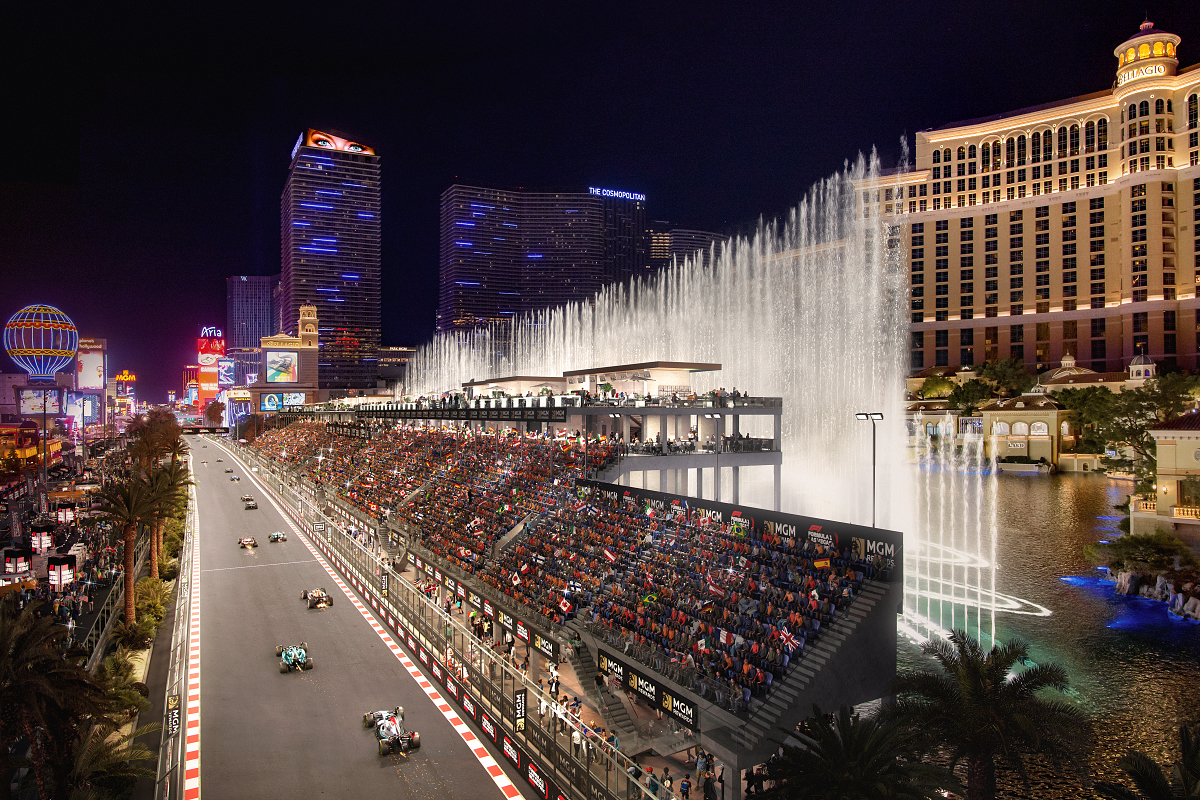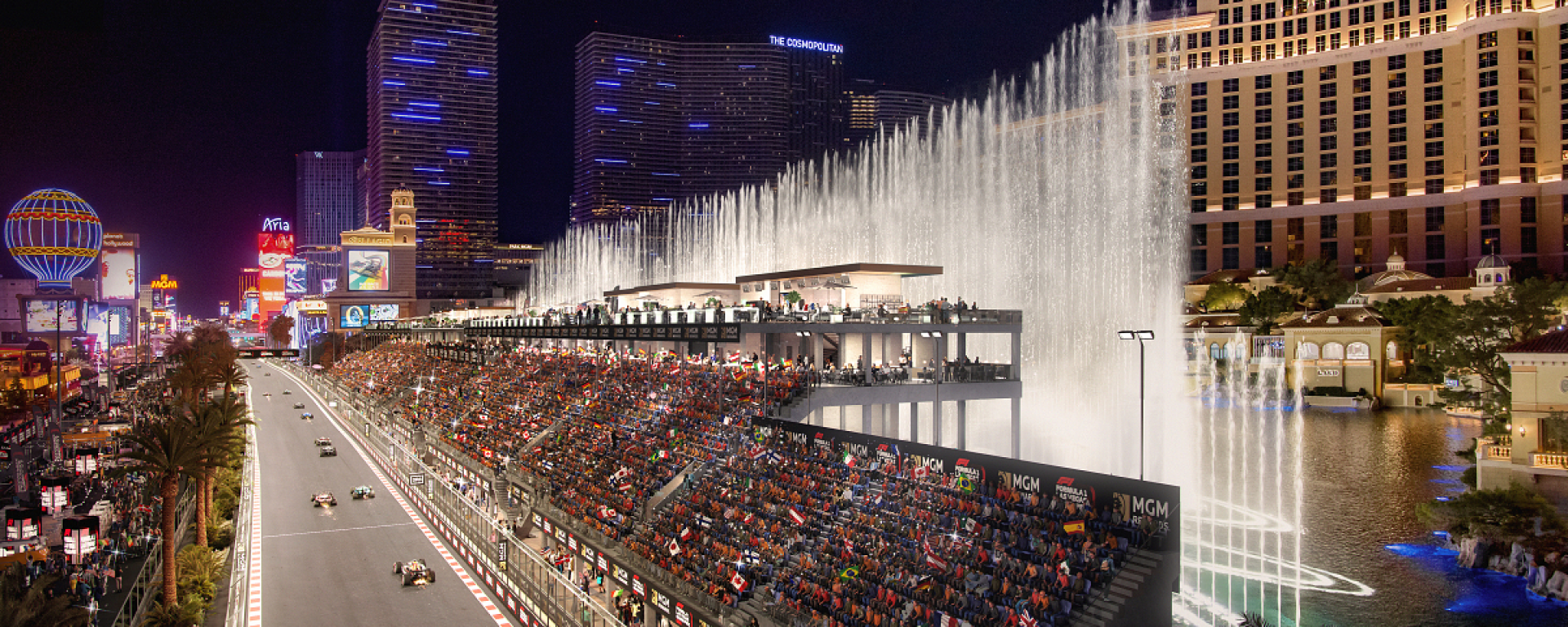
As the anticipation builds for the upcoming Formula 1 Heineken Silver Las Vegas Grand Prix 2023, the city of Las Vegas is gearing up for an influx of aviation activity. With F1 followers known for forming one of the most affluent fan bases in the sporting world, the demand for air travel during the event is expected to be exceptional. The race weekend officially begins with an opening ceremony on November 15, followed by practice sessions and qualifying on November 17 and 18, culminating in the main event on November 18.
Aircraft delivering race cars, drivers, and fans are projected to land and take off from Harry Reid International Airport (KLAS), Henderson Executive Airport (KHND), and North Las Vegas Airport (KVGT). These airports, owned by the Clark County Department of Aviation, have been diligently preparing for the event by extending ramp space to accommodate the increased demand for aircraft parking. As part of the preparation, all three airports are now enforcing a Prior Permission Required (PPR) program, which necessitates advanced authorization for arrivals.
Aviation enthusiasts and racing fans alike will witness Harry Reid International Airport handling the cargo involved with Formula 1. Eight widebody jets are tasked with carrying the high-performance race cars, pit equipment, and all other associated materials.
In preparation for the event, the two Fixed Base Operators (FBOs) at Harry Reid, Atlantic and Signature, are already at capacity and are not issuing any more PPRs. For those fortunate enough to secure a spot, during the race, there is a one-time fee of $7,700 at Signature, along with additional charges for overnight parking and handling, which can run up to $994 for overnight parking and $2,290 for handling, depending on the type of aircraft. The fee at Atlantic is comparatively cheaper, at $3,500.
At Henderson Executive Airport, Air Elite, another FBO, charges a $3,000 special event fee in addition to fees for overnight parking and landing, which also vary depending on the type of aircraft. The airport’s parking is divided into three zones: one for parking, one for quick turnaround, and one designated for NetJets.
For those not familiar with Formula 1, it is the pinnacle of international auto racing, with races held around the world on both dedicated tracks and circuits created on public roads within host cities. The race cars are open-wheel, single-seat racing cars, and the competition determines winners through a point system. Each season produces two champions, one for the driver and one for the team (constructor). The enduring appeal of the race, which debuted in 1950, is a testament to the drivers’ skill in navigating their cars through a real city’s twists and turns at high speeds, coupled with strategically planned, incredibly fast pit stops – typically under three seconds to change all four tires. The event includes more than just the main race, as fans eagerly attend practices and qualifying sessions, where timed laps dictate the starting order for the race. At the time of this writing, general admission tickets were already sold out, and the most sought-after grandstand zones and private suites had also been claimed. The opening ceremony promises to be spectacular, featuring musical acts from Keith Urban and Journey, along with performances by Cirque du Soleil and the Blue Man Group.
With the Formula 1 Grand Prix 2023 event being hailed as one of the biggest sporting spectacles of the year, it is no surprise that it presents a significant challenge for all airports involved. This mega-event also serves as a dress rehearsal for the Super Bowl scheduled for February 2024. To ensure smooth operations, transient general aviation aircraft will require prior permission before landing at Las Vegas area airports, with the PPR program in effect from November 9 to November 21, 2023.
While the primary F1 event is slated for November 18, organizers expect an influx of aircraft arrivals in the weeks leading up to it, particularly high-end jets. James Chrisley, senior director of aviation for Clark County, emphasized the expectations of a capacity crowd, given the high-end nature of the F1 fan base. The Federal Aviation Administration (FAA) also issued a notice on November 2, warning that pilots flying into Las Vegas without PPR reservations should anticipate significant delays and possible denial of service. Unauthorized arrivals will be limited to refueling before continuing to another destination.
While the PPR requirement may seem extraordinary, the FAA emphasizes that it is a common practice at major events to manage ground traffic effectively. Pilots and operators must make reservations with FBOs, and Harry Reid Las Vegas International Airport has had a targeted PPR program in place for several months.
However, this level of preparation is not limited to the immediate Las Vegas area. As far away as St. George Regional Airport (KSGU) in Utah, restrictions have been implemented to handle congestion and increased aviation activity caused by the F1 race. Operators must now request permission prior to departing or arriving at the airport until at least January 1. Pilots are required to seek permission within a 24-hour notice before the times of intended use. This policy, while necessary for handling the event’s logistics, has created challenges for some operators, particularly small flight schools.
In conclusion, the Formula 1 Heineken Silver Las Vegas Grand Prix 2023 promises to be a spectacular event, drawing high-end visitors and aviation activity to the Las Vegas area. Airports in the region are well-prepared to manage the surge, with strict PPR programs in place to ensure a smooth and organized operation. The eyes of the racing world will be on Las Vegas, as Formula 1 fans gear up for an unforgettable race weekend.

